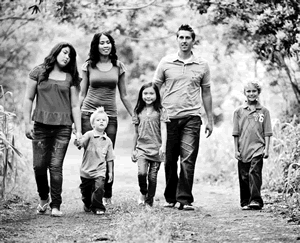 Introducing Positive Education
Introducing Positive Education
Dr Paula Robinson
A groundbreaking study by the University of Western Australia encompassing over
6000 families has suggested mental illness is on the increase in our youth. Whilst
schools do their part in trying to diagnose and assist in treatment of mental disorders
in children, they are often under resourced and lack targeted training and development
opportunities. It would seem that based on the above study and indeed the latest
statistics from the World Health Organisation, we are currently losing the battle
against mental illness, particularly in our adolescents. Treatment alone is not enough;
there is a clear and urgent need to attack mental illness not only from a reactive lens
but also a need to establish evidence based initiatives that work in conjunction with
treatment to provide proactive, preventative interventions to enhance positive mental
health and wellbeing. Research suggests that wellbeing is well worth improving for
it’s own sake as well as the goal of preventing a mental illness. For example, higher
levels of wellbeing in our teaching staff and students can provide positive and
measureable outcomes, for example, higher GPA, better academic engagement,
social/emotional skills and pro-social behaviours. Evidence-based wellbeing
interventions can also equip our educators and students with valuable life skills thus
providing a ‘buffering’ effect against some mental illnesses and resiliency when faced
with negative events. As a consequence, wellbeing is a crucial resource for everyday
life and a valuable asset within the school environment. Currently wellbeing initiatives in
schools are often referred to as Positive Education Programs and frequently fall under the
banner of ‘pastoral care’. The United Nations has set out recommendations for
developing Positive Education in their seminal paper on Education for Sustainable
Development. However, as Howard Gardner suggests in Five Minds for the Future,
the educational sector can be conservative and change is often slow, therefore,
designing, Iimplementing and sustaining any new initiatives is a challenge but in
particular, difficult for educational institutions as they are often time poor. Many
schools already have in place effective initiatives that would fall under the banner of a
‘wellbeing’ initiative but often they don’t have a strategic, measured approach that is
well designed, research based, cohesive and delivered via a multifaceted blended
learning approach.
The important point to note is that integrating regular and targeted evidence-based
wellbeing activities and practices into all aspects of school life doesn’t have to be difficult
These can be readily learned and developed by staff, parents, students and the wider
school community but must be applied thoughtfully, creatively and customized to suit
each school’s unique environment to ensure authenticity, meaning and engagement by
all stakeholders.
Where to start? It is commonly known around the world that Australia is leading the
way in best practice Positive Education Programs. There are a number of excellent
programs being implemented in Australia today; for example, Knox Grammar School
in Sydney is one rare example of a strategically designed, long-term program. Knox
have adopted a total fitness approach to wellbeing that include sub-components of
academic, social, physical and spiritual fitness underpinned by the concept and
framework of mental fitness developed at the University of Wollongong by myself
and colleagues, Associate Professors Lindsay Oades and Peter Caputi. The Knox
program utilises the language of ‘fitness’ to eleviate disinterest and stigma around
mental health and ‘psychobabble’. The program is based on current research and is
being scientifically evaluated longitudinally across multiple indices for staff, students
and parents. Pre and post intervention results spanning four years are encouraging but
emphasise the need for a long-term program as wellbeing takes time to develop.
Policymakers are also starting to meet the challenge. For example, the NSW
Department of Education and Communities has a Wellbeing Framework for NSW
public schools that states “all schools are required to have a planned approach to
wellbeing in place that incorporates the elements of the Wellbeing Framework”.
It is abundantly clear that wellbeing and the associated benefits cannot be ignored,
however, it is crucial that schools, educators, students and parents receive the support
and resources they need to meet the challenge. A little bit of knowledge can be
dangerous and there is always the temptation to adopt ‘self help’ initiatives with little
or no research support. Planning and implementing best practice requires prudence,
broad based knowledge and assistance from multiple stakeholders e.g., local Councils,
government, experts in the field, members of the local community and committed
school leaders and staff. Is it worth the effort? That’s for each of our schools to
decide.
Paula Robinson, PhD
www.positivepsychologyinstitute.com.au
Click below to see information and registration details for the Knox Grammar WA one day course for a certificate in positive education, being held on Oct 30th 2015
Certificate WA – 30 October Flyer[1]
References:
POS I T IVE P S Y CHOLOGY INS T I T U T E
4
Gardner, H. (2006). Five minds for the future. Boston: Harvard Business School
Press.
Knox Grammar Total Fitness. http://www.knox.nsw.edu.au/about/knoxinitiatives/
knox-total-fitness
NSW Department of Education and Communities | The Wellbeing Framework for
Schools. www.dec.nsw.gov.au
Robinson, P. L., Oades, L. G., & Caputi, P. (2014). Conceptualising and measuring
mental fitness: A Delphi study. International Journal of Wellbeing, 5(1), 53-
73.
Robinson, P.L., Oades, L.G., & Caputi, P. (2014). Conceptualising and measuring
mental fitness. Ph.D thesis. University of Wollongong, Australia.
UNESCO. (2005). Guidelines and recommendations for reorienting teacher
education to address sustainability. Education for sustainable development in
action. Technical paper No. 2.


